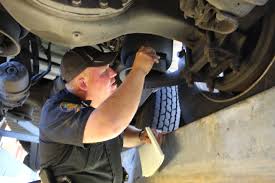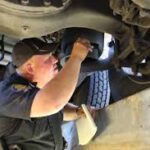Inspection and enforcement– two words that may make drivers cringe but are vastly important. These events are necessary as a reminder, that to keep our roadways safe for all, drivers and motor carriers must have properly functioning brakes and ensure vehicles are working appropriately overall. In 2018, there was a decrease in overall fatalities, second year in a row, according to the highway crash fatality data gathered by the USDOT National Highway Traffic Safety Administration. However, large-truck fatalities actually increased slightly for 2018 so there is always room for improvement. Although enforcement may seem like tedious and nit picking to some, most can appreciate the serious work done by the inspectors, and agree that the decline of fatalities is a desired result.
While CVSA has set dates for inspections, this year included June 4-6 and September 15-21, they consider brakes to be such a high priority that regular surprise roadside inspections are also conducted. In May, one that occurred checked out more than 10,000 commercial motor vehicles (trucks mostly) finding over 1600 had brake related critical violations that resulted in them being put out of service. In June more than 12000 commercial vehicles were removed from US and Canadian roadways due to equipment violations. But things are looking up, just over 86% of the inspected vehicles from September’s nationwide inspection event came out with no critical brake related violations. That is almost 10% less vehicles out than in last year’s event.
Brake components are just one part of the inspection process done by inspectors on commercial motor vehicles daily. There are several things that inspectors look for, and CVSA spotlights certain types of violations every year. Although this year’s focus was on steering and suspension, brakes are always on the menu of problems. Inspectors found issues with over 400 steering systems and just over 700 suspensions, enough to put them out of service. And despite not being the main focus, the 2 categories involving brakes (system problems and out of adjustment) accounted for slightly over 45% of the total violations resulting in trucks placed out of service. Of course there are other types of equipment violations that inspectors must find critical enough to pull vehicles out of service. These other issues measure far lower on the scale, with tire and wheel problems coming in next highest at just over 19%, and dwindling further down fuel and exhaust systems and even cargo securement. That being the case, it should be more a sense of relief than stress knowing the inspectors do what they do.



